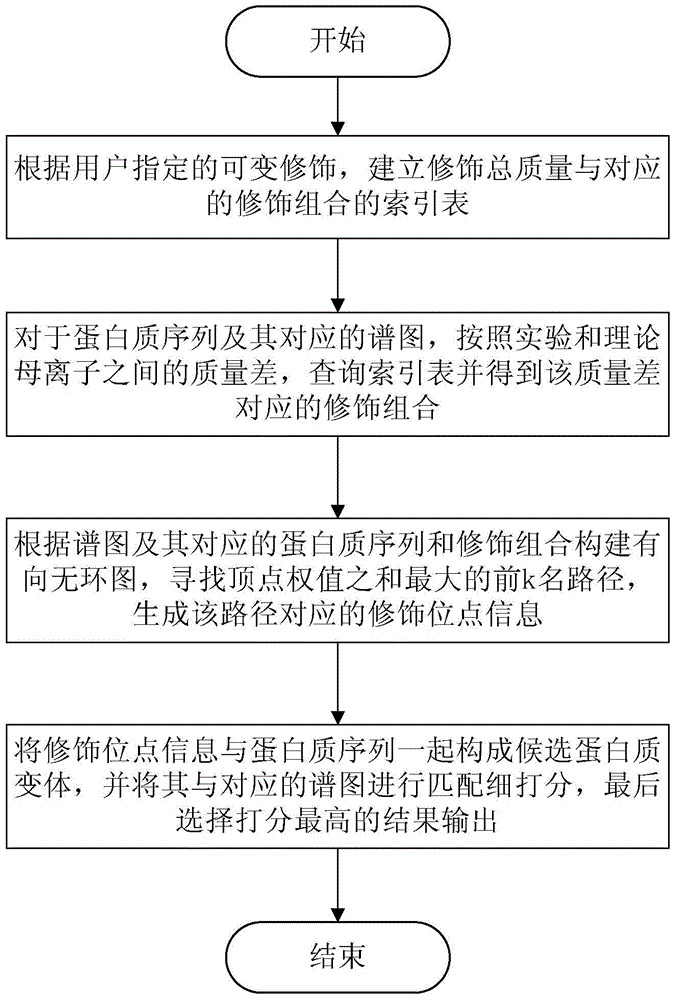A protein post-translational modification localization method and system
A post-translational modification and positioning method technology, applied in special data processing applications, instruments, electrical digital data processing, etc., can solve the problems of not supporting user-specified arbitrary modification, slow positioning speed, etc., to improve positioning speed, reduce space, The effect of improving time efficiency
- Summary
- Abstract
- Description
- Claims
- Application Information
AI Technical Summary
Problems solved by technology
Method used
Image
Examples
Embodiment Construction
[0045] In order to have a clearer understanding of the technical features, purposes and effects of the present invention, the specific implementation manners of the present invention will now be described with reference to the accompanying drawings.
[0046] According to an embodiment of the present invention, a method for locating protein post-translational modifications is provided.
[0047] refer to figure 1 In general, the method may include: the first step, according to the variable modification specified by the user, establishing an index table of the total mass of modification and the corresponding modification combination; the second step, for the protein sequence to be mapped and its corresponding spectrum According to the mass difference between the experimental and theoretical precursor ions, query the index table and obtain the modification combination corresponding to the mass difference; the third step is to construct a directed acyclic graph according to the spe...
PUM
 Login to View More
Login to View More Abstract
Description
Claims
Application Information
 Login to View More
Login to View More - R&D
- Intellectual Property
- Life Sciences
- Materials
- Tech Scout
- Unparalleled Data Quality
- Higher Quality Content
- 60% Fewer Hallucinations
Browse by: Latest US Patents, China's latest patents, Technical Efficacy Thesaurus, Application Domain, Technology Topic, Popular Technical Reports.
© 2025 PatSnap. All rights reserved.Legal|Privacy policy|Modern Slavery Act Transparency Statement|Sitemap|About US| Contact US: help@patsnap.com


